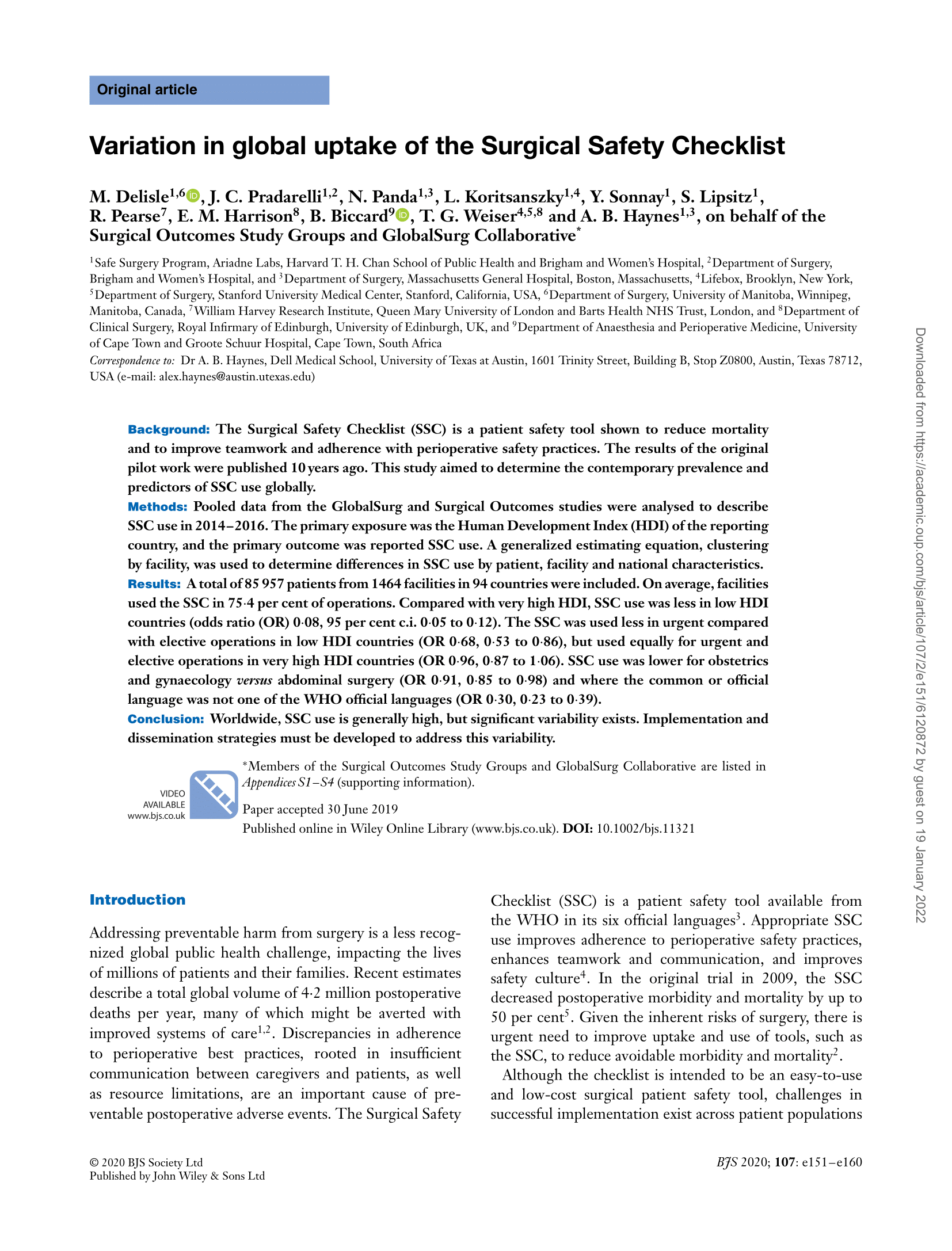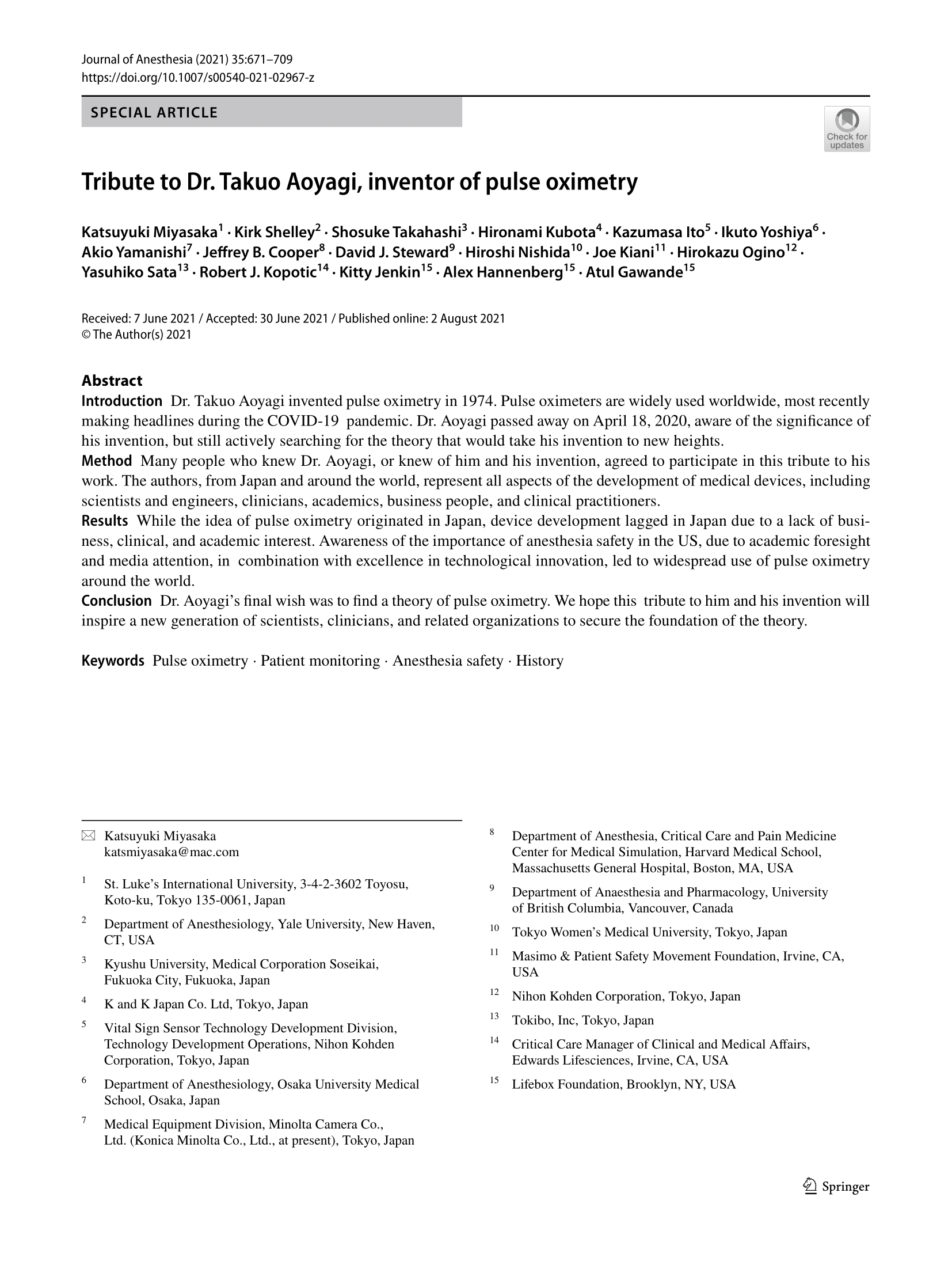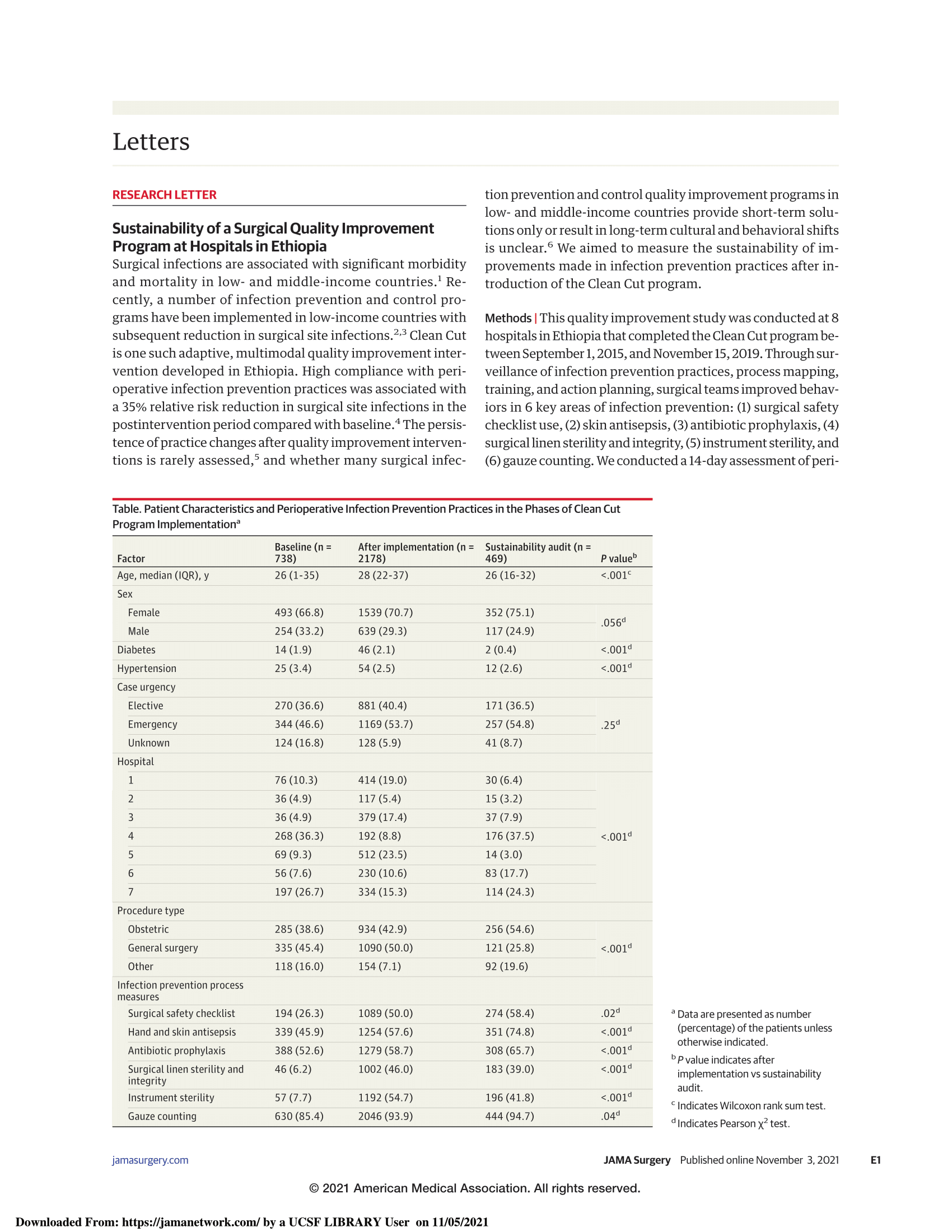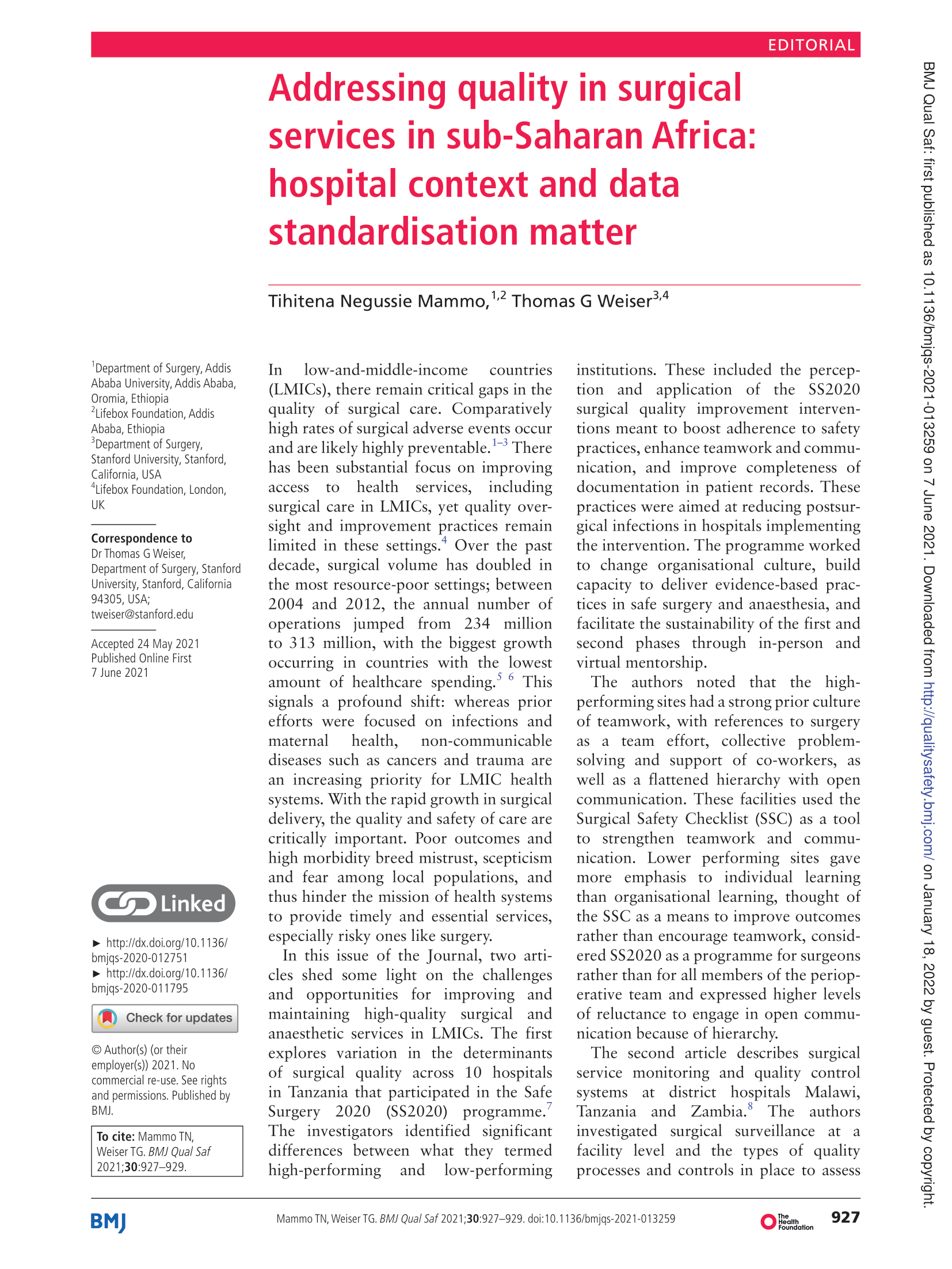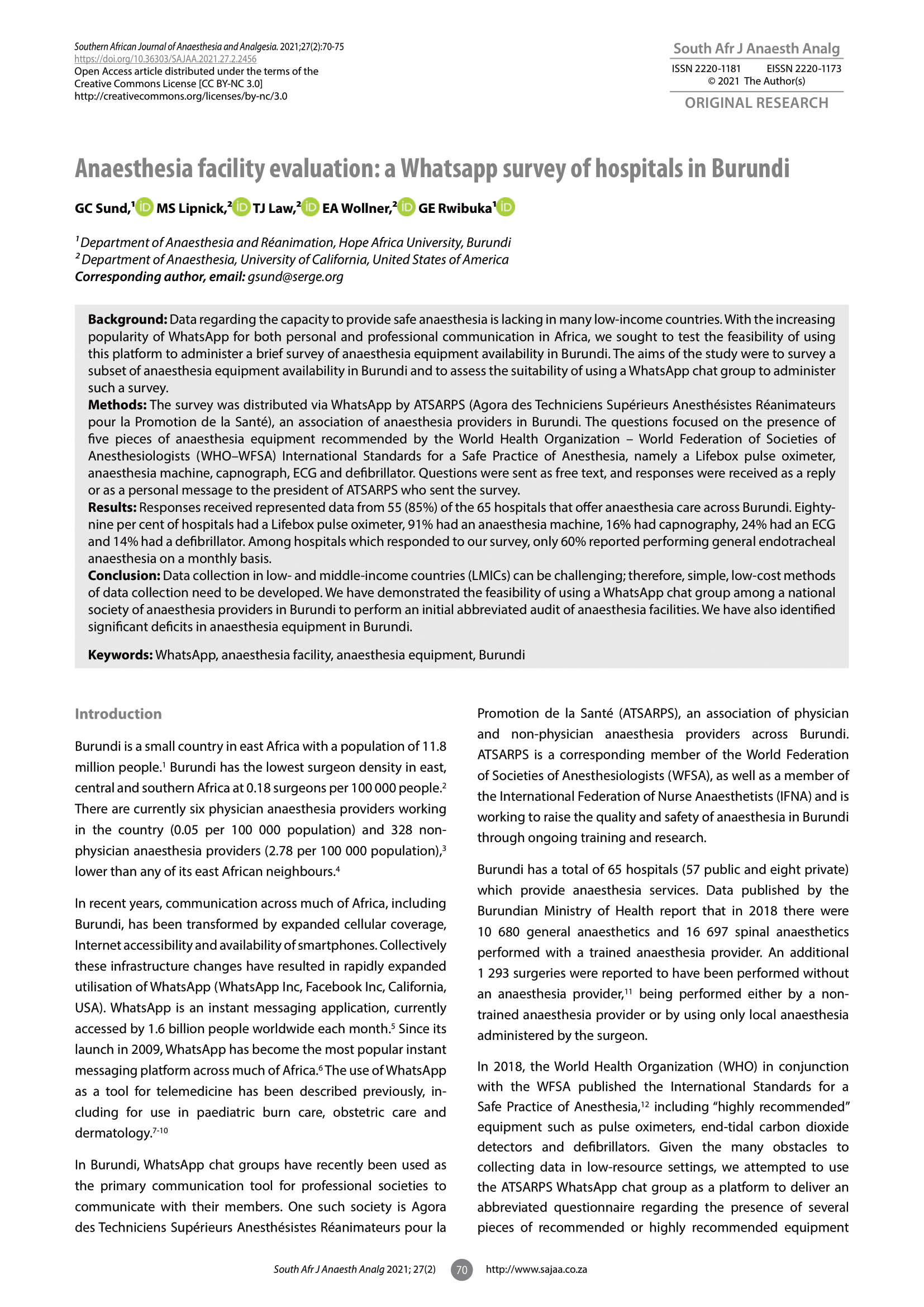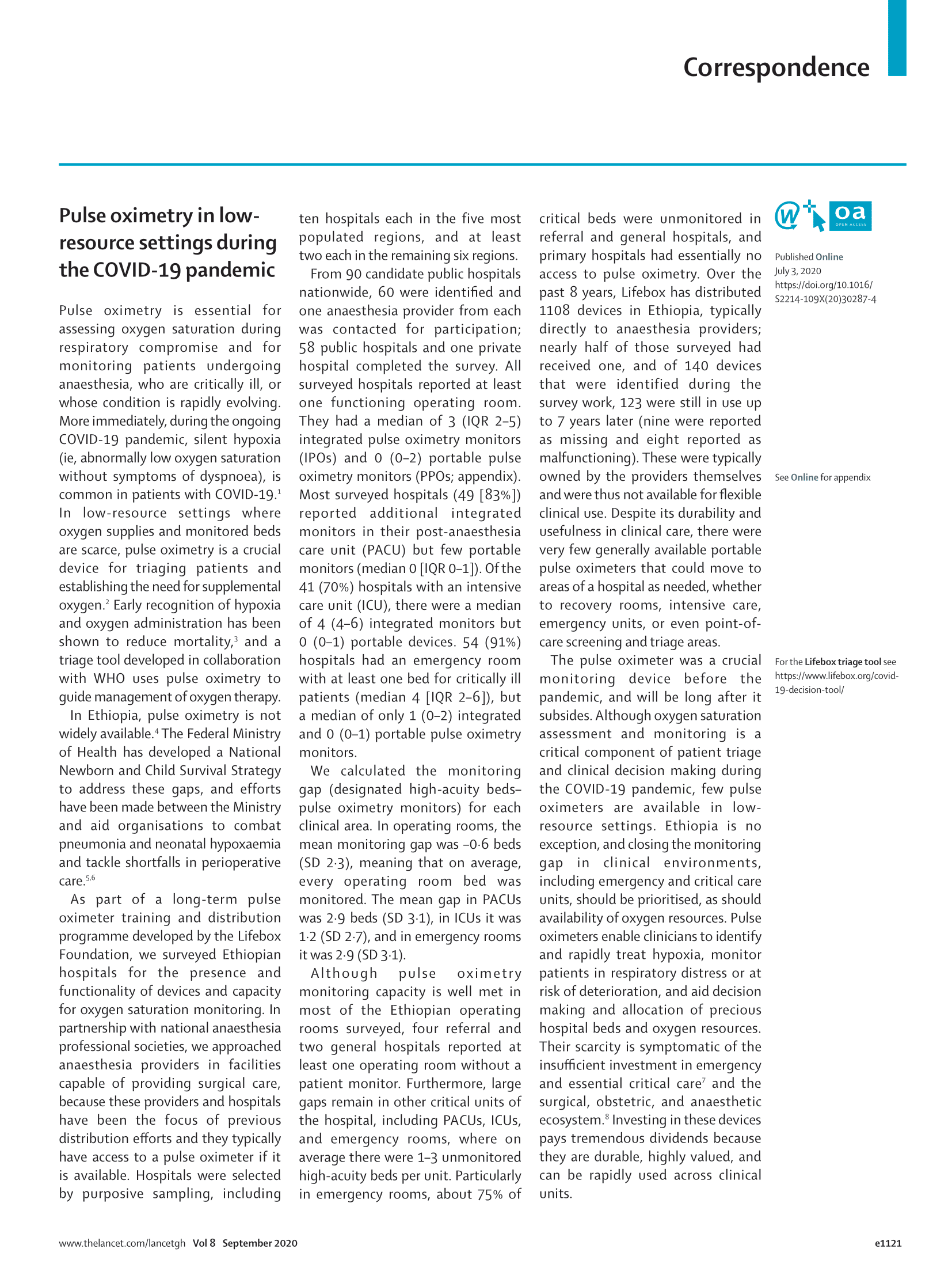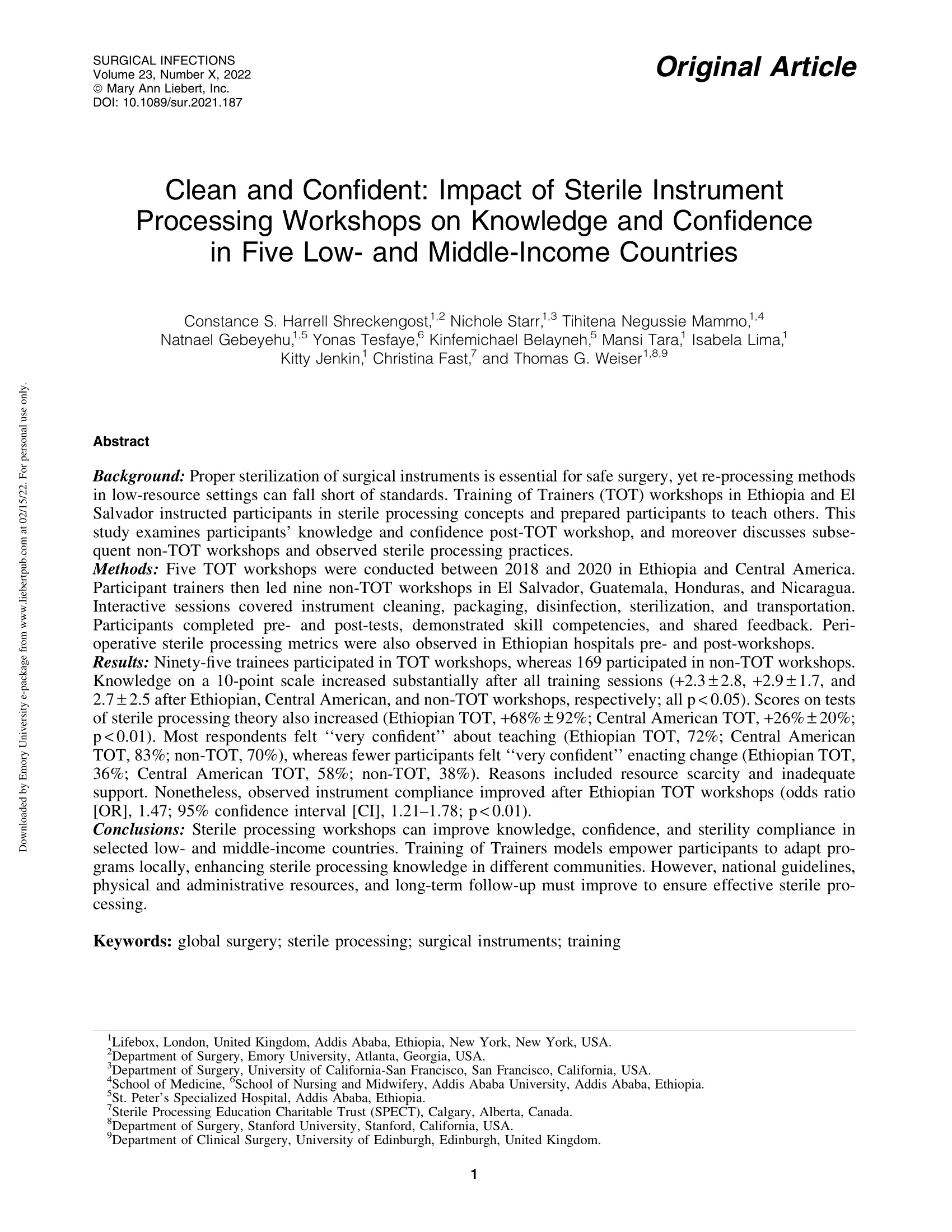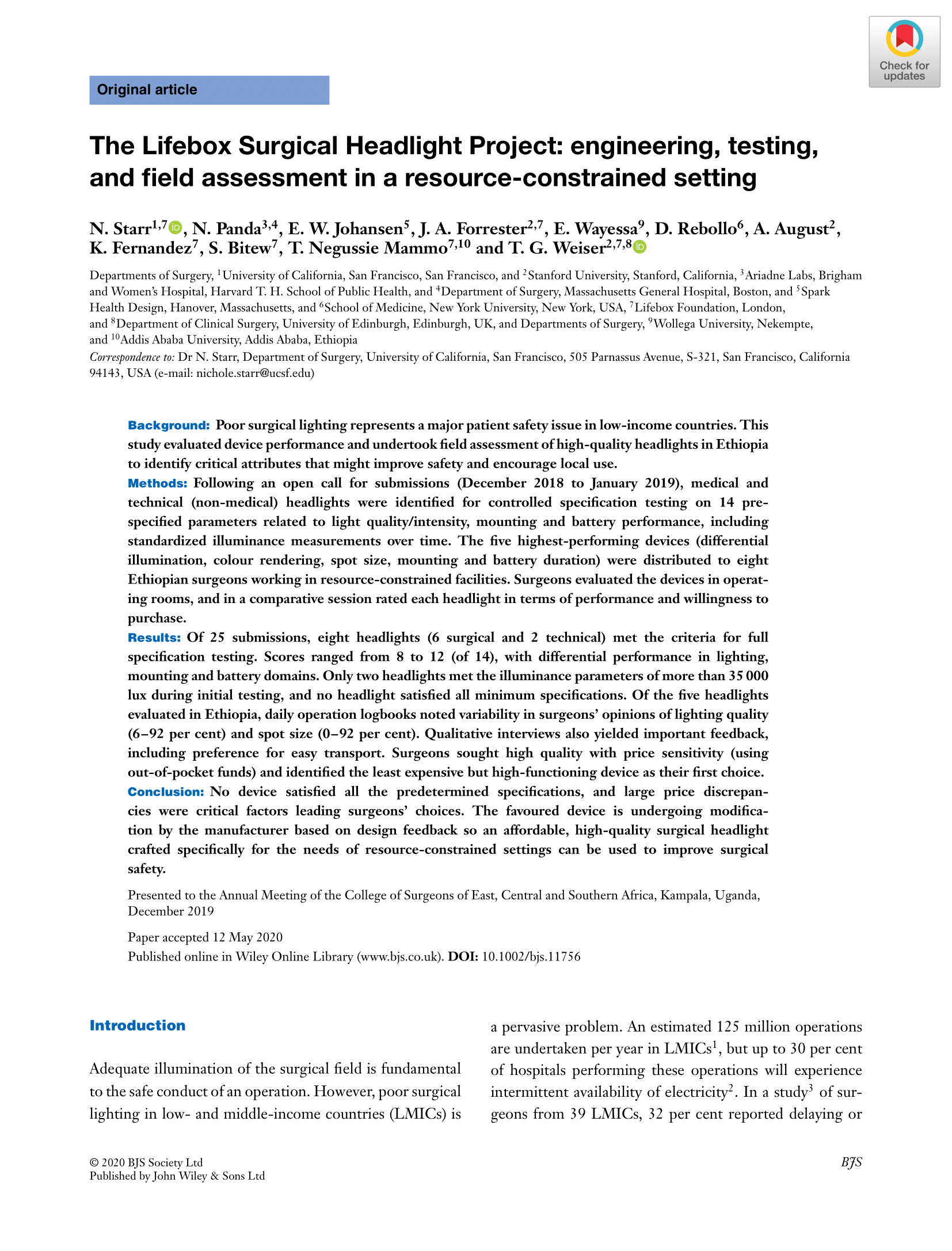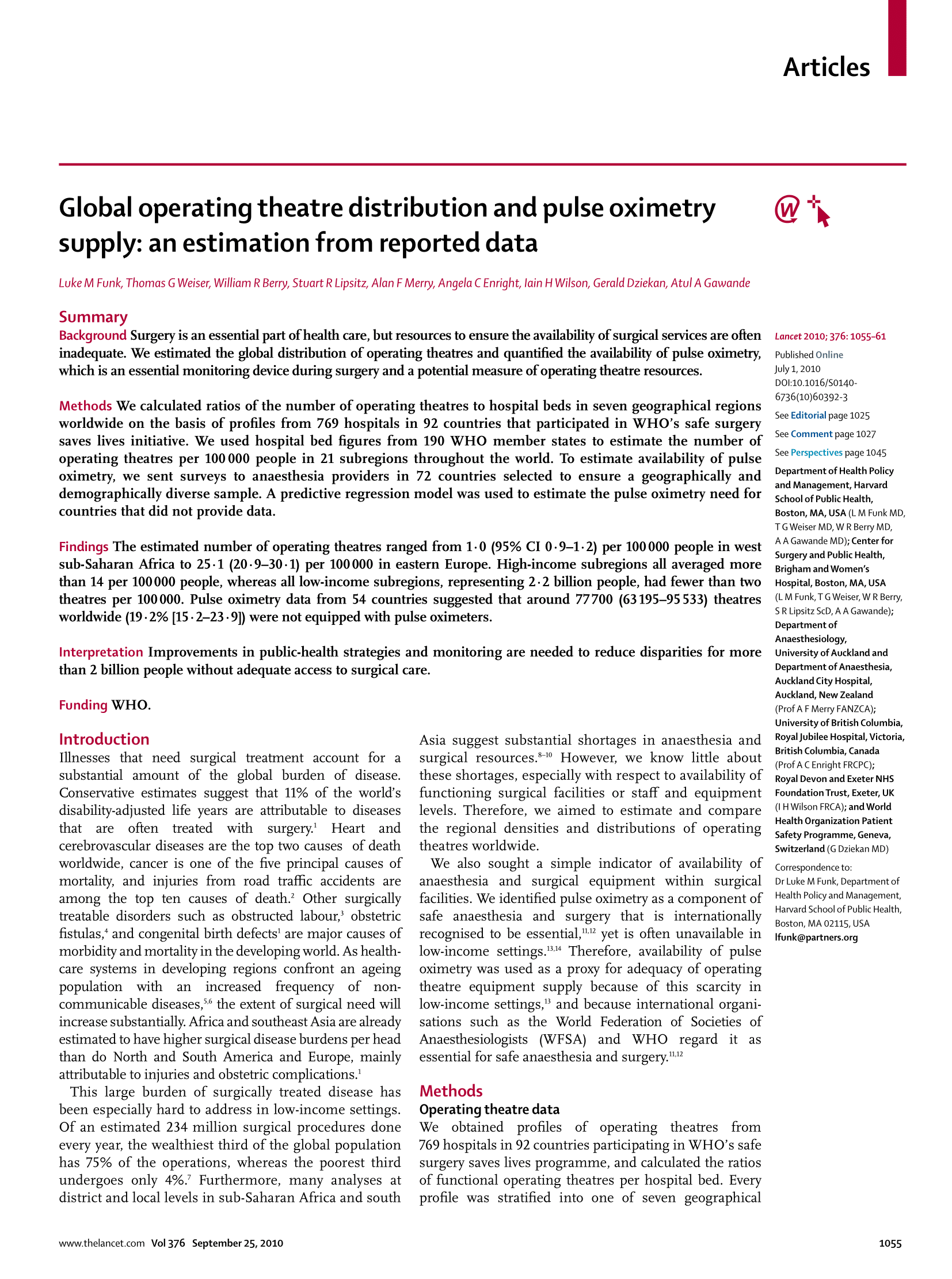
Global operating theatre distribution and pulse oximetry supply: an estimation from reported data
This study showed the estimated number of operating theatres ranged from 1·0 (95% CI 0·9–1·2) per 100 000 people in west sub-Saharan Africa to 25·1 (20·9–30·1) per 100 000 in eastern Europe. Improvements in public-health strategies and monitoring are needed to reduce disparities for more than 2 billion people without adequate access to surgical care. […]


